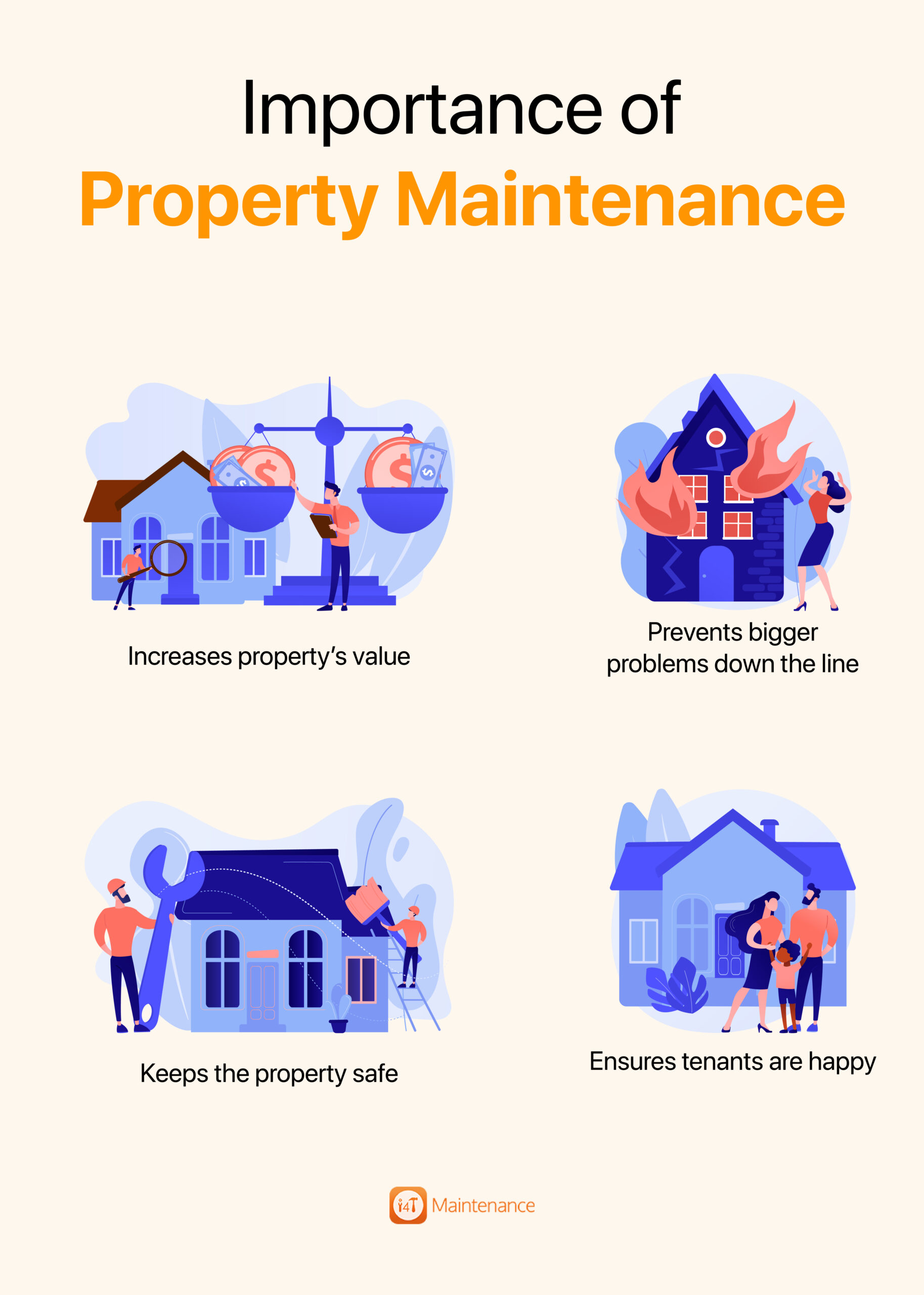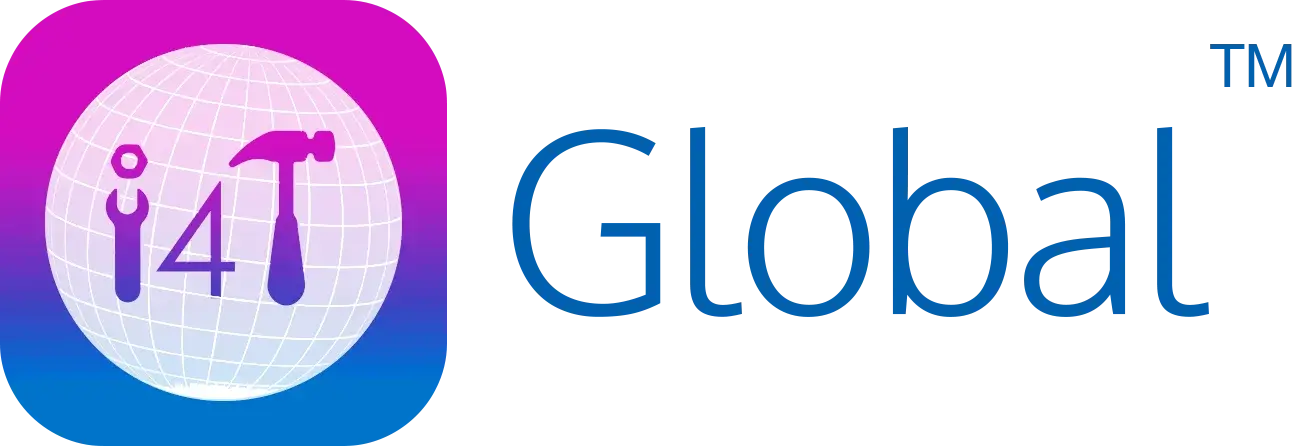Property maintenance remains an important part of property management that is not getting enough attention.
This all-in-one property maintenance guide is made for property managers, building managers, facility managers, and real estate agents. It will help you keep your properties in good shape, enhance their value, and ensure tenant satisfaction.
In this guide, we’ll explain the difference between property maintenance, property management, building maintenance, and facility maintenance. We’ll also talk about the different roles involved in the maintenance of properties and the International Property Maintenance Code (IPC).
We’ll help you plan for property maintenance and talk about why ensuring compliance is essential. We’ll also go over some problems you might run into. Finally, we’ll discuss how property maintenance management software can help you overcome these challenges.
Let’s get started and learn all about property maintenance together.
What is Property Maintenance?
Property maintenance involves regular upkeep of residential or commercial properties to keep them safe, comfortable, functional, and profitable. It involves tasks such as installation, repairs, and maintenance of indoor spaces, fixtures, systems, and appliances. It also ensures that the outdoors is in good condition.

Property maintenance is essential for several reasons:
- Increases property’s value: If a property is looked after well, it’s more likely to keep or even increase its worth.
- Prevents bigger problems down the line: Small issues can turn into big, expensive problems if they’re not fixed. Regular maintenance helps catch these issues early.
- Keeps the property safe: Regular checks and fixes can stop accidents from happening. Things like bad wiring or parts of the building being damaged can be avoided.
- Ensures tenants are happy: A well-kept property is a nicer place to live or work in. This can make tenants more comfortable and they might want to stay longer.
Types of Property Maintenance
There are a few different types of tasks you might do in property maintenance:
- Routine Maintenance: This includes regular tasks such as cleaning, taking care of the lawn, and fixing small things.
- Preventive Maintenance: This sort of maintenance is done to keep equipment or systems from breaking down. For example, you might service the HVAC systems or check the roof for leaks.
- Corrective Maintenance: This is reactive maintenance. It is carried out after the damage is done and you need to fix it. For example a problem with the plumbing or an electrical fault.
- Emergency Maintenance: This is when an unexpected breakdown happens and needs to be fixed right away. Examples include a gas leak or power outage.

Some of the key areas maintenance managers need to focus on include:
- HVAC Systems: Regular checks make sure the heating, ventilation, and air conditioning systems are working well.
- Plumbing: Checking the plumbing regularly can stop leaks and blockages.
- Electrical Systems: Regular checks keep electrical faults at bay and make sure everyone is safe.
- Landscaping: Regular lawn care such as trimming trees, and maintaining outdoor spaces keeps the property looking nice.
Structural Maintenance: This includes checking the roof, walls, and foundations for any damage.
Property Maintenance vs Property Management
Property maintenance involves ensuring the property is functional and safe for occupants. Property management, on the other hand, involves a lot of tasks, other than just property upkeep.
Besides maintenance tasks, property management includes collecting rent and handling leases. Property managers are also required to regularly check out on tenants, and help them deal with any problems they face.
Property Maintenance vs Building Maintenance
These two terms are used to refer to more or less the same thing. However, property maintenance and building maintenance are different.
Property maintenance includes the upkeep of the building and the surrounding areas. This may consist of the landscaping and parking area too.
On the other hand, building maintenance specifically focuses on maintaining indoor spaces. This includes things such as plumbing, electrical, painting, and cleaning all done inside the building.
Property Maintenance vs Facility Maintenance
As explained above, property maintenance is looking after the property, inside out.
Facility maintenance is the maintenance of a facility designed for a specific purpose. Facilities can include places like schools, hospitals, stadiums, etc. The goal here is to maintain specific systems and equipment within the facility and ensure it is in working order.
Roles Involved in Property Maintenance
Property maintenance is an extensive task. It involves several different people completing a given work order from start to finish.
This includes:
Property Managers: Property managers coordinate with all others including tenants and contractors to ensure the maintenance work is carried out perfectly.
Maintenance Managers: These individuals plan, organize and oversee the work being carried out, and ensure specific requirements are met.
Contractors: These are service suppliers hired to carry out the maintenance work. They need to be licensed, certified, and insured to meet compliance requirements.
Technicians: These are trained and qualified employees assigned by the contractors to perform the work on the site.
Other Staff: This includes landscapers, custodial staff, and security personnel.
What is the IPC (International Property Maintenance Code)
The International Property Maintenance Code (IPC) is a set of rules made to help take care of buildings and properties. It’s there to make sure people are safe and healthy in all kinds of properties. It helps guide how property maintenance is done all over the world.

Creating and implementing a property maintenance plan needs careful planning and analysis.
Here are some of the steps a property maintenance plan involves:
- Identify Maintenance Tasks: First of all, carry out a thorough inspection of the property. Based on this, figure out all the maintenance tasks that need to be done. This can include routine, preventive, corrective, or emergency maintenance tasks.
- Prioritize Tasks: Once all tasks have been identified, they need to be sorted. Ranking criteria should be based on their importance, costs, and consequences of not attending to them.
- Create a Schedule: Next, you need to make a schedule for doing the maintenance tasks. This should consider how frequently it needs to be done. It should also consider the available resources for the task.
- Budget for Maintenance: At this step, you must set aside a budget for each work order. Consider variables like costs of labor, materials, and any necessary equipment or services. It’s also a good idea to set aside some money to take care of emergency repairs.
- Assign Responsibilities: Look for the right contractors and ensure they have the skills to do the job. Allocate tasks accordingly.
- Implement the Plan: Once the above steps are done, you need to put this plan into action. This involves completing work orders based on the schedule and ensuring service quality. You might also need to change the plan as needed based on feedback and results.
- Review and Update the Plan: A maintenance plan is not a set-and-forget thing. It should be looked at regularly and updated as needed. The changes you make should reflect the changes in the property, maintenance practices, or regulatory requirements.
Importance of Compliance in Property Maintenance
Legal and regulatory compliance play a vital role in property maintenance.
These regulations include building codes, health and safety guidelines, and rules about the environment.
When property managers hire contractors who are certified to carry out the work they can effectively avoid penalties and ensure safety.

Maintenance managers face several challenges when upkeeping properties. These include:
- Budget Constraints: Property managers might have limited financial resources to keep the property in good shape.
- Aging Infrastructure: Older properties tend to have more frequent maintenance issues. These include faulty systems and equipment that can be costly to repair or replace.
- Finding Qualified Contractors: It can be hard to find reliable, skilled workers to do special jobs. Moreover, they might cost you extra money too.
- Unexpected Repairs: Even with regular upkeep, emergency repairs can pop up. This can mess up plans and budgets.
- Regulatory Compliance: Keeping up with building codes that tend to change now and then, can be hard.
- Tenant Disruptions: Too much maintenance work can disturb the residents.
- Preventive Maintenance: Putting the right plan to prevent problems can be tough. It requires more resources and systems than reactive maintenance.
- Record Keeping: Keeping detailed records of all maintenance work is important. Records are needed to plan, budget, forecast, analyze and adjust.
With the right strategy, careful budgeting, and property maintenance software, property managers can overcome maintenance management challenges.
Property Maintenance Software to Overcome These Challenges
Technology can do wonders when it comes to streamlining maintenance tasks, improving communication, ensuring compliance, and keeping detailed maintenance records.
More specifically, it can help with:
Efficiently Handling Work Orders: Property maintenance software can help make many maintenance jobs faster and simpler. Everything can be done from one place, from service request processing to work order completion and disbursing payments to vendors.
Budget Management: The software can track costs in detail and report on them. It can also help predict maintenance costs based on future maintenance needs, helping with budget planning.
Preventive Maintenance: Scheduling regular checks is a common feature of property maintenance software. This can help find problems early on and save tenants any inconvenience down the road.
Vendor Management: The software can help find and hire qualified and trusted service suppliers. This helps address service requests faster and more reliably.
Regulatory Compliance: The software ensures regulatory guidelines are followed by helping maintenance managers track progress in real-time.
Communication: The software can improve communication with tenants as well as vendors. Self-service portals help tenants place service requests and keep them notified of progress. Vendors on the other hand can obtain work order requirements and ensure SLA compliance.
Record Keeping: Property maintenance software can help reduce administrative work by keeping detailed records of each completed work order. You can use these records to create audit reports or analyze trends to improve service quality.
i4T Maintenance is one such Maintenance Management Software that allows managers to enhance the value of their property assets. It can help you with efficiently handling service requests, real-time communication, and routine maintenance. It is also a great tool for vendor management, ensuring regulatory compliance, record keeping, and more.
Learn more about i4T Maintenance here.
FAQs
Property maintenance includes tasks that ensure the property is functional, safe, and comfortable for the tenants. Property management encompasses collecting rent, managing tenants, and coordinating property maintenance tasks.
Property maintenance tasks vary in nature. Their frequency depends on their importance, urgency, and available budget. Routine tasks can be carried out on a weekly, monthly, bi-annual, or annual basis. It is a good idea to have a maintenance schedule that outlines when each task should be done.
Key areas in property maintenance include routine cleaning, landscaping, and HVAC systems. It also includes plumbing, electrical systems, and keeping the structure of the building in good shape. When done regularly, you can keep minor issues from turning into expensive repairs.
Property maintenance software has capabilities such as streamlining and automating maintenance tasks. It can also help with work order dispatch, real-time communication, and keeping records. It can further help you with vendor compliance and collecting tenant feedback to measure their satisfaction.
Creating a property maintenance plan involves figuring out and listing maintenance tasks based on their importance. Next, you need to make a schedule of tasks, budget for maintenance, assign responsibilities, and put the plan into action. Finally, you must review your plan based on results and adjust accordingly.
Hot off the press!

With our cutting-edge technology and in-depth knowledge of how the Field Service Management sector operates, the i4TGlobal Team loves to share industry insights to help streamline your business processes and generate new leads. We are driven by innovation and are passionate about delivering solutions that are transparent, compliant, efficient and safe for all stakeholders and across all touch points.









